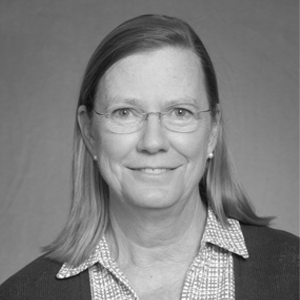You trained your SQF practitioner. You followed protocol, covered the right topics, and ensured they understood their responsibilities. But can you prove it?
Because your auditor isn’t looking for verbal confirmation. They’re not there to assume good intentions or accept general assurances. They’re there to confirm, with written evidence, that every element of your SQF system meets documented, auditable standards—and that confirmation starts with your training records.
The Role of Documentation in SQF Audits
SQF Edition 9 is unambiguous: practitioners must not only be trained, but their training must be documented. Auditors rely on this documentation to establish confidence in your facility’s capacity to maintain food safety and regulatory control. Without it, even the most competent practitioner becomes a liability—not because of their ability, but because of the system’s inability to prove it.
Why the emphasis on paper trails and proof? Because training records are more than checkboxes or formality—they are one of the clearest signals of institutional control. They show that your food safety culture is rooted in accountability. They demonstrate that you don’t just claim to be compliant—you’ve operationalized that compliance. And that you have the documentation to back it up in front of any auditor, at any time.
What Auditors Expect—and Why Most Facilities Miss It
Auditors don’t walk in hoping to catch errors. But they do come in looking for consistency, completeness, and conformance to Edition 9. Their job is to validate—not assume. That means your records need to check more than just a few boxes.
Here’s what they’re trained to ask:
- Can the facility produce named, dated training certificates?
- Does the documentation align with SQF Edition 9’s list of required competencies?
- Is the training source credible, and is the record independently verifiable?
- Are there procedures in place for when training lapses, expires, or changes?
This is where many facilities fall short. They may believe they’re in compliance—until a desk audit or documentation request reveals:
- A practitioner was trained five years ago, but there’s no evidence of refreshers
- A certificate lacks a date, or doesn’t mention what competencies were covered
- The record lives in a file cabinet and isn’t accessible during remote audits
An audit isn’t just a test of what you know—it’s a test of what you can prove, clearly and quickly.
Common Pitfalls That Get Facilities in Trouble
Facilities rarely fail audits for lack of effort or investment. They fail because of avoidable gaps—subtle but critical oversights that erode credibility. And few gaps are as common—or as consequential—as missing or inadequate training records.
Here are the red flags auditors encounter most:
- Verbal claims of experience: Saying someone “has years in the industry” might be true, but it won’t hold up without formal, documented evidence. Auditors want to see certificates, course outlines, and trainer credentials—not just hearsay.
- Incomplete files: A certificate missing a date, the trainer’s name, or a description of what was covered puts your entire training record into question. Auditors assess the thoroughness and traceability of your files.
- Expired or unverified credentials: Many facilities don’t realize that outdated training—even if once valid—can fall out of compliance under Edition 9. Worse, some certificates never met Edition 9’s expectations to begin with.
Even if your practitioner is highly competent and actively involved in food safety leadership, your audit will falter if your documentation doesn’t meet expectations. The threshold isn’t “trained enough”—it’s “proven with specificity.”
Registrar Corp Makes It Easy to Be Audit-Ready
Registrar Corp’s SQF Practitioner course isn’t just built to educate. It’s engineered to satisfy auditors. Every component of the training—from curriculum to documentation—is aligned with Edition 9’s expectations for recordkeeping, transparency, and traceability.
Each trainee receives:
- A named certificate with clear completion date
- Downloadable documentation that’s aligned with SQF Edition 9
- Verifiable proof that the practitioner has covered every required competency, including food safety plan management, internal audits, and corrective actions
- A digital record that can be easily retrieved during desk audits or shared with inspectors in real time
This isn’t generic, one-size-fits-all training. It’s audit-calibrated education, delivered with records that match what auditors want to see—structured, complete, and aligned with the standard.
Let’s break it down:
| What Auditors Look For | What Registrar Provides |
| Certificate with full name and date | ✔ Named, timestamped certificates with course completion |
| Training aligned with SQF Edition 9 | ✔ Curriculum mapped directly to Edition 9 competencies |
| Verifiability and traceability | ✔ Digital and downloadable documentation on file |
| Immediate access for remote audits | ✔ Instant access to records during onsite or desk audits |
If you’re wondering whether your current documentation truly meets today’s audit standards, don’t wait for an inspector to make that call. This is where many QA managers get blindsided. See what top auditors expect—and how your training stacks up.
Final Word: Don’t Let Missing Documentation Undermine Your Compliance
It’s audit day. Your auditor asks for your SQF practitioner’s training file. You reach for the binder—or the desktop folder—and open it.
But one certificate is missing a date. Another has no mention of course content. The only digital copy you have is buried three inboxes deep.
Now you’re explaining. Scrambling. Hoping the auditor accepts what you have.
Your SQF practitioner might be fully qualified. But in the world of audits, qualifications without documentation carry no weight. And training records are one of the most deceptively simple areas to neglect—because they don’t seem urgent until the auditor is sitting in front of you, asking for them.
You can’t afford assumptions during an audit. You can’t afford partial files or missing timestamps. What you need is complete, validated proof—clear, aligned, and ready for inspection.
If you’re not sure your practitioner’s current credentials still meet Edition 9’s expectations, it’s worth a pause. Review what’s changed and how to stay qualified.
You don’t need another generic training program. You need documented proof that satisfies your auditor and clears inspection without a second glance. Get the SQF Practitioner course that delivers audit-ready documentation.








